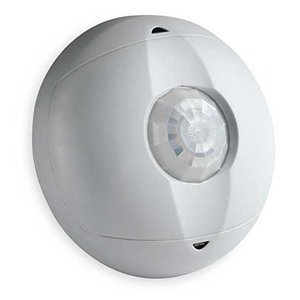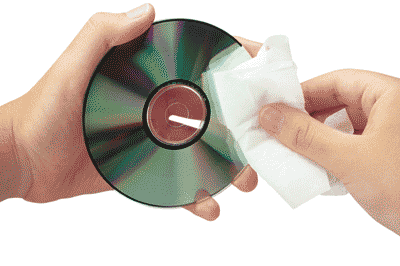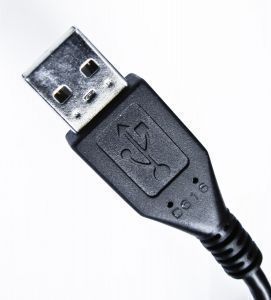The case is the metal “box” that all the computer parts fit inside. It provides protection and the ability to customize the case. Larger cases leave room for expansion such as extra hard drives or R/W drives.
There are three main types of cases:
Pizza Box Case
This is a thin case used mainly for network stations. They are usually seen in an office or at school.
Desktop Case
Usually sits horizontally on the desk. It is not as compact as the pizza box case, but has more room for cards. This case was the usual case for a home computer but they are rarely seen today.
Tower Case
This is the most common case today. Tower cases come in three sizes – mini, midi, or maxi. Mini is the smallest and maxi is the largest.
Tower cases have lots of room extra drives and other accessories.
The most important thing about the case is that it has enough space for the components inside to run smoothly. The case should be able to fit all the components. Other than that, a case can be chosen by design preference.
Power Supply
Supplies power to all the parts in the computer. Usually depends on the country’s voltage. The power supply must be able to supply enough power to the components.
The power supply must be able to provide enough power to the parts. Generally, the higher end the parts, the more power they use. Make sure it has the same voltage as all the power outlets in the house.
Cooling System
The cooling system keeps the computer parts cool. The most common way is to use case fans. Cheap fans are noisier and might not last as long. One of the more recent types of cooling is liquid cooling. Using a mixture of water and antifreeze, liquid cooling is much more efficient than fans and is a lot quieter. However, if any of this liquid leak onto the motherboard or other components, they will definitely break. Liquid cooling is generally not recommended to anyone building a computer and is best left up to computer manufacturers.
High end video cards and processors create more heat, so the cooler the inside of the computer is, the better. If a component like the CPU overheats, it will most likely be destroyed.
The cooling system should run smoothly and quietly. It must be strong enough to keep the parts at an average temperature (70-90 Celsius).
Motherboard
The motherboard is the computer’s main circuit board. It holds the CPU, RAM modules, and most of the circuitry. All adapter cards plug into the motherboard. The motherboard defines how much RAM, adapter cards, and the type of CPU the computer is going to have.
The Socket Connector is where the CPU is plugged in. Different types of plugs go with different CPUs.
The DDR RAM Slots is where the RAM is plugged in. They are important because they define how much RAM the computer can have on it.
The hard drive is plugged into the IDE Headers.
PCI slots are where adapter cards are connected. Cards such as sound cards and extra USB cards are all plugged into the PCI slots.
The PCI express slot (AGP slot) is where the video card is plugged in. They are a special kind of PCI slot that is made specifically for video cards.
The back panel connectors are basically where all USB devices are plugged in. Most motherboards include a mouse connector, PS/2 Keyboard, USB pots, Serial port, parallel port, external audio jacks, AGP slot, and a MIDI port in the back panel connectors. If there is onboard sound on the motherboard, the speakers are plugged into the back panel connectors.
Terms:
- Keyboard and Mouse Port – Ports where the keyboard and mouse are plugged in
- USB Ports – A high speed, universal method of plugging extra peripherals into the computer.
- Serial Port – Ports that joysticks and other game controllers are plugged into.
- Parallel Port – Where the printer is plugged in.
- MIDI – A port that MIDI capable instruments can be plugged into.
- Onboard sound – A sound card has already been installed on the motherboard without taking up a PCI slot.
- AGP port – The monitor is plugged into this port.
Today, motherboards usually come with onboard sound. RAM limits are between 2GB and 8GB. A lot more focus has been put on PCI express and AGP slots because of the high demand for video cards, and the ever increasing level of graphics. PCI slots are being used less because they are not needed as much. Things like USB cards and sound cards are usually included in the motherboard nowadays.
Motherboards should be able to hold all the components. Choose a motherboard with more RAM slots so that there is room to upgrade. The more RAM the better. Make sure the motherboard has at least two PCI slots and one AGP or PCI-Express slot. The PCI slots hold adapter cards and the AGP or PCI-Express slots hold the GPU. Motherboards should also come with extra onboard ports. This saves an adapter slot.
Processor (CPU)
The CPU (Central Processing Unit) is the brain of the computer and the most important chip in the computer. When a program is run, the CPU performs the calculations and carries out the commands.
Modern processors contain millions of transistors (miniature electronic switches) that are etched onto a small silicon square called a die. The die is about the width of the thumb.
The processor generates quite a lot of heat, so it always has a heat sink and fan that lies on top of it that prevents it from getting too hot.
The faster the CPU the better. Speed is measured in MHz (megahertz) or GHz (gigahertz). Make sure that the CPU is compatible with the motherboard and has the same type of socket. Most new processors are 64-bit. This means that they support the upcoming Windows Vista. 64-bit processors can also run 32-bit applications, but not the other way around. Try to go for 64-bit, as 32-bit processors will soon be out of date.
Dual Core processors combine two or more processors into a single package. This speeds up the CPU drastically and enables optimal speed when running many programs at the same time.
Memory (RAM)
The memory holds “short term” information for the processor to use. This may be a program or a set of data. The processor is able to retrieve information from the RAM at very high speeds. When the processor needs information that is not in the RAM, it has to read the information from the hard drive, which is much slower.
The RAM modules are slotted into the RAM slots, which are next to the processor socket on the motherboard.
DDR3 models are the newest type of RAM. It doubles the speed of data transfer between the RAM and CPU compared to the old DDR model. Make sure that the RAM is compatible with the motherboard.
Video Card (GPU – Graphics Processing Unit)
The video card sends the visual output that a program produces to the monitor, which displays it on the screen. For gamers and others who use very high end graphics or special video work regularly, the GPU is the most expensive part of the computer. These cards also run very hot and most have a fan on the side.
To get the best performance from a video card, a PCI-Express or an AGP slot is needed. If it is used on a normal PCI slot, it will run much slower. Most video card manufacturers provide a benchmark figure of speed. GPUs also carry on board RAM, the more the better. Make sure that the card has driver support for OpenGL and Direct3D. These are subsystems that are used in games and other online applications.
Video cards also come with a refresh rate. This shows how many times the monitor refreshes each pixel. The higher the refresh rate, the better. Lower refresh rates tend to give people headaches.
DVD/CD Drive
CD and DVD drives allow the computer to read and burn CDs and DVDs. DVDs hold a lot more data than CDs. Different kinds of CDs and DVDs can be rewritten or played on a DVD player.
Make sure that the drive has a high access time. Access time is the actual time required for the CD or DVD drive to locate a specific file on the disc.
Just like a hard drive, the CD/DVD drive uses a special set of on board RAM modules. The larger the cache, the fewer data transfer interruptions.
Some kinds of CDs/DVDs burn and rewrite CDs and DVDs. This is not necessary, but a good feature to have.
Hard Drives
The hard drive is where all the information and programs on the computer are stored. The faster the rpm (revolutions per minute) of the platters (spinning discs in the hard drive that store data magnetically) in the hard drive, the faster it can read and retrieve data. The main concern about hard drive is the amount of space. Typical hard drives are around 100 GB.
Storage capacity is the biggest concern with hard drives. The more storage capacity, the more that can be stored on the hard drive. Users should choose a hard drive with a storage capacity that meets their needs.
Access time in a hard drive measures how fast the drive can read and write data. Choose a hard drive that has an access time of at least 10ms.
RPM measures how fast the platters in the hard drive are moving. Choose a hard drive with a high RPM. Common RPMs are 7200 and 10,000.
The hard drive’s cache stores data that is used frequently. The larger the cache, the less information the hard drive has to re-read each time it is opened.
Floppy drive
Floppy discs are being used less because they are unreliable and have a very short life span. The floppy drive is optional.
Monitor
Monitors are available in different size. The most common sizes are 17, 19, and 21 inches. This is measured diagonally. They display what is being done on the computer.
Size is the main thing to consider when buying a monitor. Most monitors today have a flat screen. This makes the image much clearer. Also try to find a monitor that decreases the amount of electromagnetic radiation created.
Mouse and Keyboard
A mouse controls the cursor on screen. Wireless and optical mice are used more because they are more accurate. Try to stick with optical mice because they have a longer lifespan. Trackball mice get dirty and need cleaning every once in a while.
Keyboards allow the user to type on the computer. Most keyboards today have 103 keys, but some have extra buttons that the user can program to do what he/she wants.
Most users want a 103 keyboard. There are some ergonomic keyboards that shape the hand and make typing easier, this is just a preference.




Killeroo09
Now I know the parts of the computer that I use
Emily Dula
this is extremely helpful information for projects or just learning about PCs
arizz
thank u so much we got an idea from this site…. it really help us a lot. GOD bless u always more power
Uno
thx, really helped w/ a project i wz working on 😀
Ross 1
Originally posted by bhuvnesh: “:-) hey thanks for gud information”
Thanks for helping me with my homework. :-*
bhuvnesh
🙂 hey thanks for gud information
christian alia
😀 😉 8) thank you that you are there so when i search the computer there is you blablabla